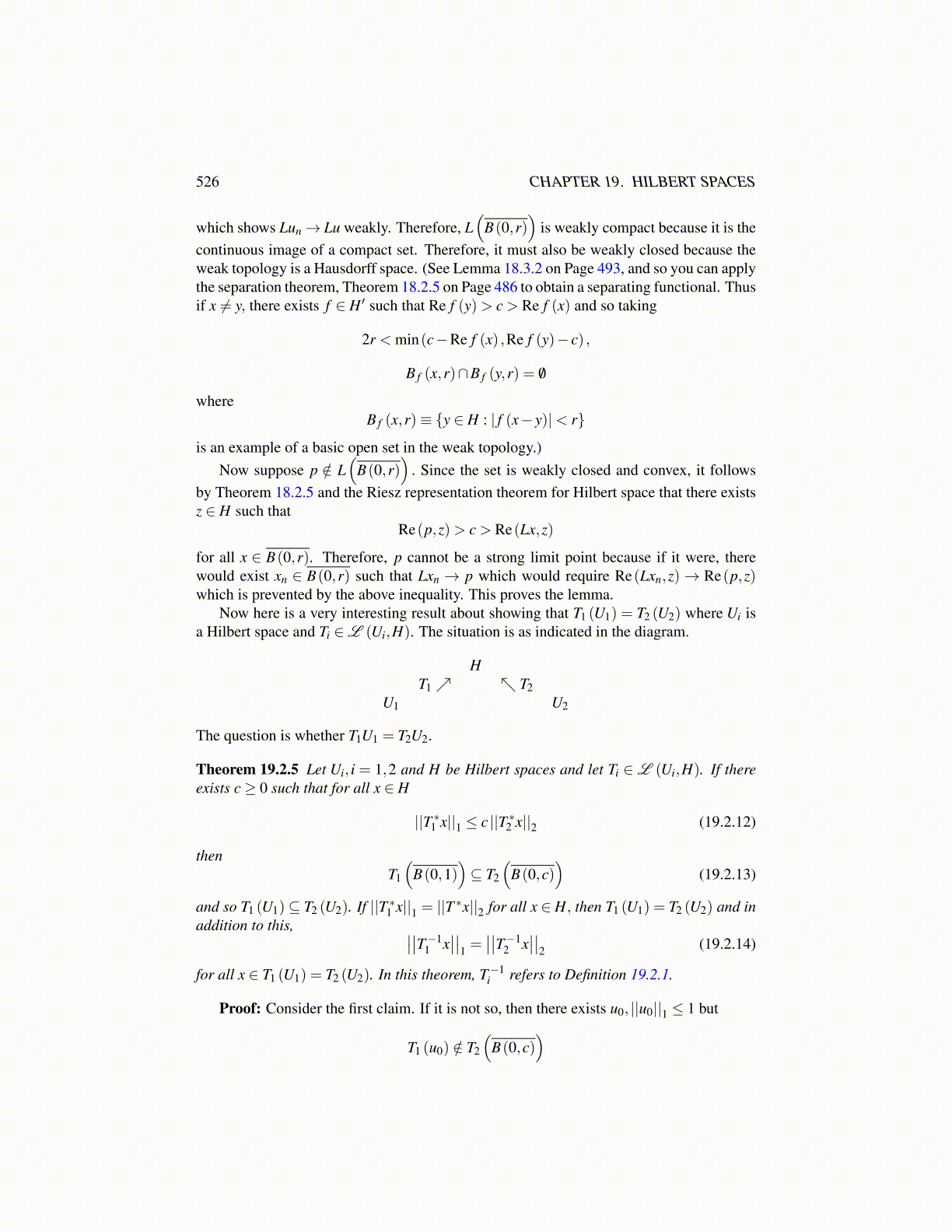
526 CHAPTER 19. HILBERT SPACES
which shows Lun→ Lu weakly. Therefore, L(
B(0,r))
is weakly compact because it is thecontinuous image of a compact set. Therefore, it must also be weakly closed because theweak topology is a Hausdorff space. (See Lemma 18.3.2 on Page 493, and so you can applythe separation theorem, Theorem 18.2.5 on Page 486 to obtain a separating functional. Thusif x ̸= y, there exists f ∈ H ′ such that Re f (y)> c > Re f (x) and so taking
2r < min(c−Re f (x) ,Re f (y)− c) ,
B f (x,r)∩B f (y,r) = /0
whereB f (x,r)≡ {y ∈ H : | f (x− y)|< r}
is an example of a basic open set in the weak topology.)Now suppose p /∈ L
(B(0,r)
). Since the set is weakly closed and convex, it follows
by Theorem 18.2.5 and the Riesz representation theorem for Hilbert space that there existsz ∈ H such that
Re(p,z)> c > Re(Lx,z)
for all x ∈ B(0,r). Therefore, p cannot be a strong limit point because if it were, therewould exist xn ∈ B(0,r) such that Lxn → p which would require Re(Lxn,z)→ Re(p,z)which is prevented by the above inequality. This proves the lemma.
Now here is a very interesting result about showing that T1 (U1) = T2 (U2) where Ui isa Hilbert space and Ti ∈L (Ui,H). The situation is as indicated in the diagram.
HT1↗ ↖ T2
U1 U2
The question is whether T1U1 = T2U2.
Theorem 19.2.5 Let Ui, i = 1,2 and H be Hilbert spaces and let Ti ∈L (Ui,H). If thereexists c≥ 0 such that for all x ∈ H
||T ∗1 x||1 ≤ c ||T ∗2 x||2 (19.2.12)
thenT1
(B(0,1)
)⊆ T2
(B(0,c)
)(19.2.13)
and so T1 (U1)⊆ T2 (U2). If ||T ∗1 x||1 = ||T∗x||2 for all x ∈ H, then T1 (U1) = T2 (U2) and in
addition to this, ∣∣∣∣T−11 x
∣∣∣∣1 =
∣∣∣∣T−12 x
∣∣∣∣2 (19.2.14)
for all x ∈ T1 (U1) = T2 (U2). In this theorem, T−1i refers to Definition 19.2.1.
Proof: Consider the first claim. If it is not so, then there exists u0, ||u0||1 ≤ 1 but
T1 (u0) /∈ T2
(B(0,c)
)